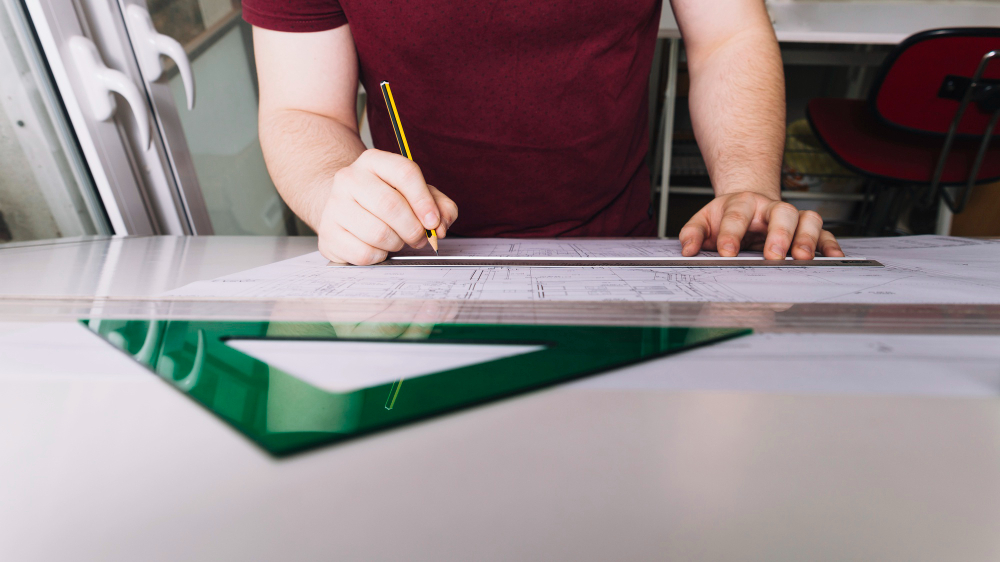Acrylic sheets, commonly known by their trade names such as Perspex or Plexiglas, are a versatile and widely used material. Due to their clarity, strength, and resistance to impact, they are a preferred choice in various industries ranging from construction to art and design. Here, we take a deep dive into the intricate process of manufacturing acrylic sheets.
Full Process of Manufacturing Acrylic Sheets
Raw Material Preparation
At the heart of acrylic sheet manufacturing is the raw material – methyl methacrylate (MMA). MMA is a colourless liquid compound that acts as the monomer unit in the production of polymethyl methacrylate (PMMA) acrylic sheets. The production of MMA itself involves a series of chemical reactions using raw materials like acetone, hydrogen cyanide, and sulphuric acid.
Polymerisation Process
The conversion of MMA monomer into a solid polymer is known as polymerisation. This is typically done using two methods: batch cell or continuous process.
- Batch Cell
The batch cell method, also known as the cell-cast process, is a labour and time-intensive method where liquid MMA is poured between two glass moulds, which are then sealed and allowed to polymerise. This method produces blocks of acrylic which are then cut down into sheets.
- Continuous Process
The continuous process involves constantly feeding MMA monomer between two stainless steel belts or between a set of rotating drums. Under controlled temperature and pressure, polymerisation occurs, and long sheets of acrylic are produced. This method is faster and more cost-efficient than the batch cell method.
Curing and Annealing
After polymerisation, the newly formed acrylic sheets are still susceptible to internal stresses due to the rapid polymerisation process. To alleviate these stresses and improve the material’s strength, the sheets undergo a curing and annealing process. This involves heating the sheets in an oven to a specific temperature and then gradually cooling them. This process ensures that the sheets have uniform thickness and enhanced strength.
Cutting and Sizing
Following the curing and annealing process, the large blocks or continuous sheets of acrylic are then cut to size. This is achieved through sawing or laser cutting, depending on the required precision and the volume of production. With modern machinery, it is possible to cut the sheets with high precision, ensuring that the final product meets the exact specifications of the customer.
Finishing Touches
The cut and sized acrylic sheets are then further refined through processes like buffing, polishing, and flame polishing. These finishing touches are vital to ensuring the sheets have a clear and glossy appearance, free from scratches and other surface imperfections. Special coatings can also be applied to the sheets to provide additional features, such as UV resistance or anti-glare properties.
Quality Control
Before the acrylic sheets are ready for market, they must pass rigorous quality control checks. This involves visual inspections, measuring the thickness and dimensions of the sheets, and testing them for strength and durability. Only sheets that meet stringent quality standards are allowed to proceed to the final stages of manufacturing.
Packaging and Distribution
The final step in the manufacturing process involves preparing the sheets for shipment to customers. This entails carefully packaging the sheets to prevent damage during transport and labelling them with the necessary information, such as size, thickness, and batch number.
In an age where sustainability is paramount, many manufacturers are now exploring more eco-friendly production methods, including recycling and reusing off-cuts and waste material.
To find out more about a specific manufacturer’s process and their commitment to sustainability, it is advisable to consult directly with the company.
The process of manufacturing acrylic sheets is a fascinating journey that transforms liquid MMA into the strong and clear sheets that we use in a myriad of applications today. It involves a series of carefully controlled steps, each of which contributes to the quality and characteristics of the final product. As demand for this versatile material continues to grow, so too does the innovation and efficiency of its production.





























































